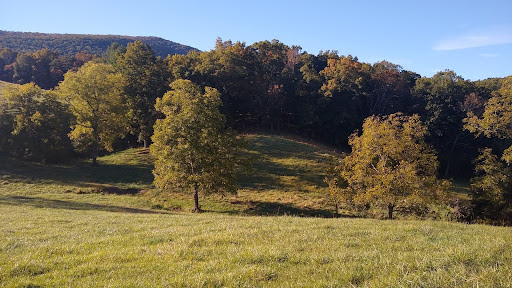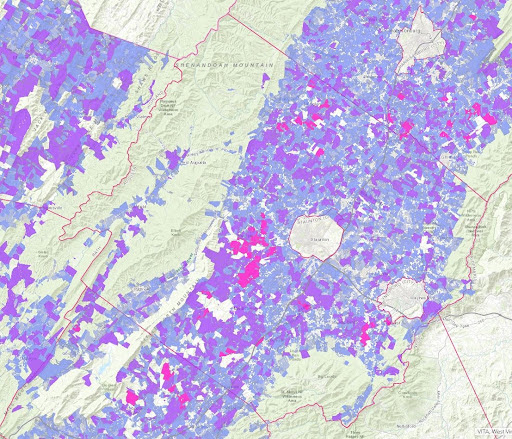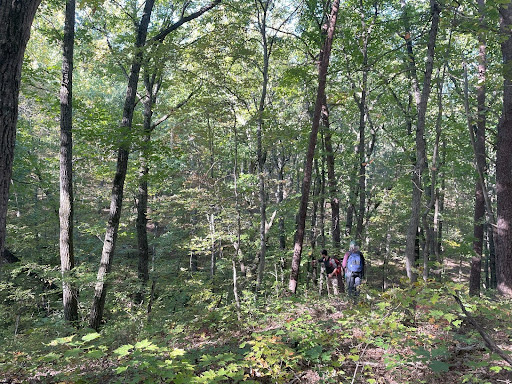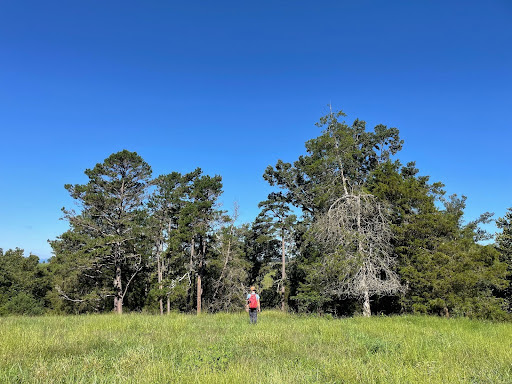VCC staff preparing a field report on a working farm in Rockingham County
Guest Written by Taylor Evans, Director of Land Protection, Valley Conservation Council
“Where do we even start?” The ever-present question for organizations with ambitious missions, expansive geographies, and limited staff. Couple this with ever-increasing threats from climate change to commercial and residential development, and a small question becomes a seemingly overwhelming problem. Valley Conservation Council is a private, non-profit land trust dedicated to the protection of the natural and cultural resources of the greater Shenandoah Valley – an 11-county service region spanning two large watersheds and millions of acres of working farms and important upland forests along Shenandoah National Park and the George Washington and Jefferson National Forests. With a team easily counted on one hand, we are faced with the perennial question of how to best use limited resources to protect an iconic landscape, nationally recognized as a conservation priority.

A farm surrounded by the George Washington and Jefferson National Forest that
contains high-quality mixed hardwood forests and miles of waterways protected
by VCC in 2022

“Augusta Priority Ag Parcels”: A map showing the highest (pink) and high (purple) conservation value parcels based on criteria to select for agricultural protection and restoration importance.

VCC staff inspecting a conserved forest in Shenandoah County
1: Lily Bose (Valley Conservation Council)
2: Lily Bose (Valley Conservation Council)
3: Taylor Evans (Valley Conservation Council)
4: Lily Bose (Valley Conservation Council)
Lightning Update is a regular communication of the Chesapeake Conservation Partnership. Any opinions expressed are those of the authors and do not necessarily reflect positions of the Partnership or member organizations.
To share a success story, news, or important event, send your information to:
Support for the Chesapeake Conservation Partnership is provided by:
National Park Service Chesapeake
EPA Chesapeake Bay Program
USDA Forest Service
Pennsylvania Department of Conservation & Natural Resources
Maryland Department of Natural Resources
Virginia Outdoors Foundation
US Fish & Wildlife Service
Chesapeake Conservancy
The Chesapeake Conservation Partnership is co-convened by:




